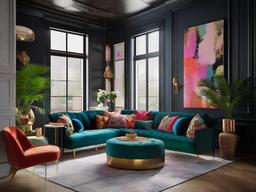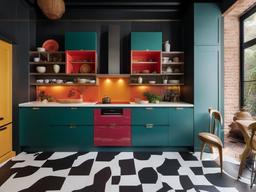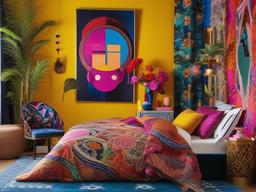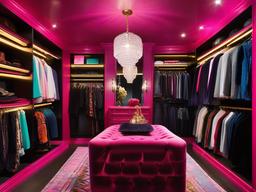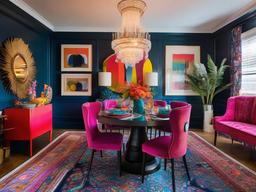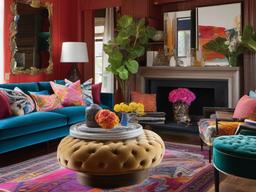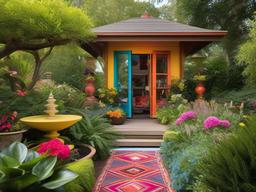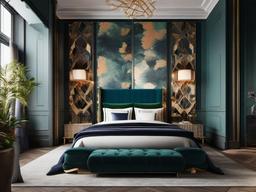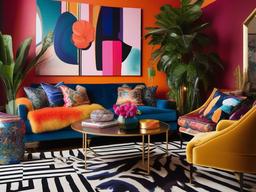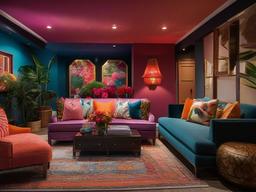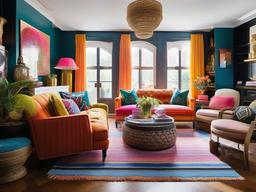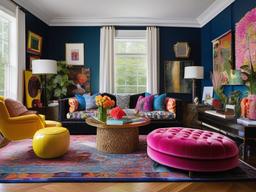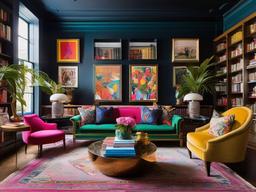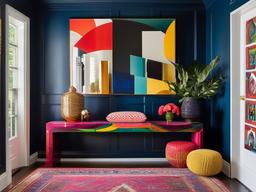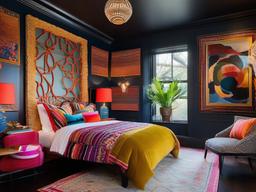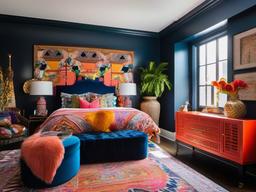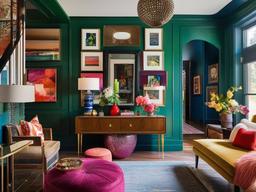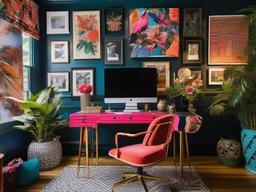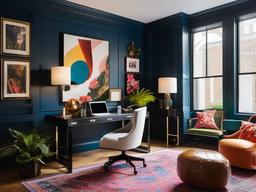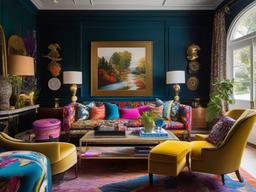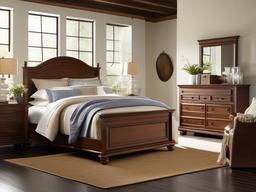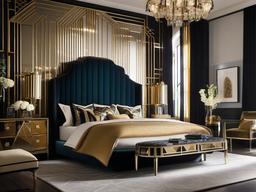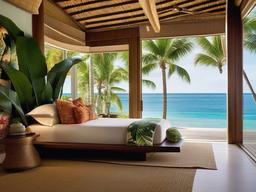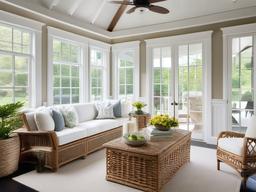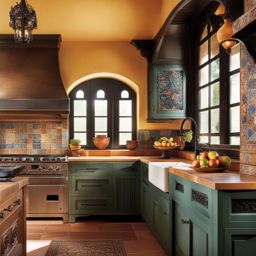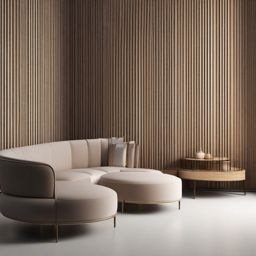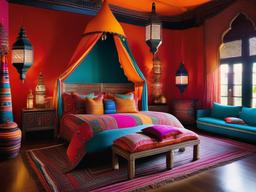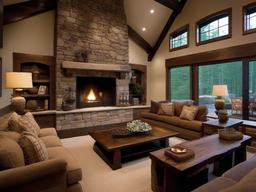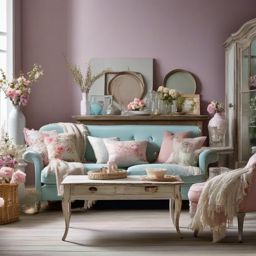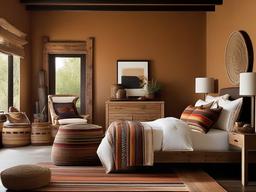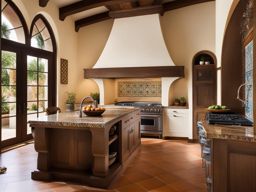Interior design decor ideas > maximalist interior design style
Use Windy AI room design generator to assist in your room interior design and home decor. Generate ideas in over 40+ interior design styles.
Maximalist design celebrates abundance, color, and a mix of styles, patterns, and textures. It encourages a 'more is more' philosophy, embracing bold choices and personal expression. Maximalist interiors are often characterized by vibrant colors, eclectic decor, and layers of textiles, creating visually stimulating spaces that reflect the owner's personality and interests. This style contrasts with minimalism, focusing on a rich tapestry of design elements.
Maximalism has its roots in the exuberance of the 1980s and 1990s, where bold colors and eclectic styles became popular. The movement has evolved, drawing inspiration from various cultural influences, vintage pieces, and global decor. Maximalism celebrates individuality and creativity, allowing homeowners to showcase their collections and unique tastes through their interiors. It represents a rejection of minimalist trends, inviting a more personal and expressive approach to design.
To achieve a maximalist interior, embrace bold colors and patterns, mixing different textures and styles. Layer textiles in various prints, such as florals, stripes, and geometric designs, to create a rich visual experience. Incorporate a variety of furniture styles, and don't shy away from bold statement pieces. Use accessories like artwork, books, and personal collections to enhance the layered look, ensuring that each element reflects your personality.
Maximalist furniture is often diverse, featuring a mix of styles, colors, and materials, such as vibrant sofas, eclectic chairs, and ornate tables. Accessories include oversized artwork, patterned cushions, and layered rugs. Decorative items often showcase personal collections, such as vintage finds, travel souvenirs, and decorative objects from different cultures. Lighting can be bold and unique, using colorful lamps or chandeliers that add to the overall drama of the space.
Maximalism has its roots in the exuberance of the 1980s and 1990s, where bold colors and eclectic styles became popular. The movement has evolved, drawing inspiration from various cultural influences, vintage pieces, and global decor. Maximalism celebrates individuality and creativity, allowing homeowners to showcase their collections and unique tastes through their interiors. It represents a rejection of minimalist trends, inviting a more personal and expressive approach to design.
To achieve a maximalist interior, embrace bold colors and patterns, mixing different textures and styles. Layer textiles in various prints, such as florals, stripes, and geometric designs, to create a rich visual experience. Incorporate a variety of furniture styles, and don't shy away from bold statement pieces. Use accessories like artwork, books, and personal collections to enhance the layered look, ensuring that each element reflects your personality.
Maximalist furniture is often diverse, featuring a mix of styles, colors, and materials, such as vibrant sofas, eclectic chairs, and ornate tables. Accessories include oversized artwork, patterned cushions, and layered rugs. Decorative items often showcase personal collections, such as vintage finds, travel souvenirs, and decorative objects from different cultures. Lighting can be bold and unique, using colorful lamps or chandeliers that add to the overall drama of the space.

